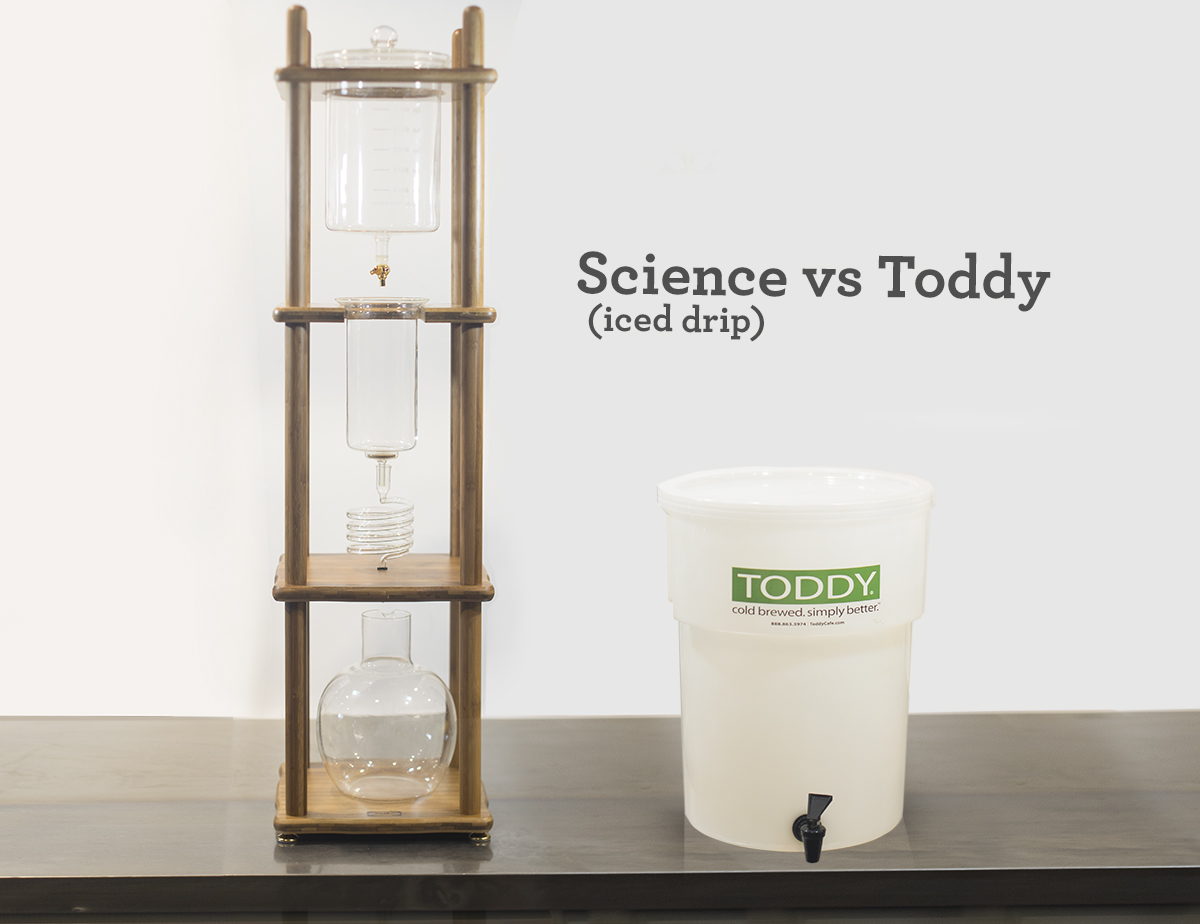Summertime is a great time for cold-brewed coffee! There are a few methods for cold-brewing coffee, but there is one constant factor: it’s brewed with ice-cold water rather than hot water. This post will touch upon the Toddy System and the Yama slow-drip (also known as ‘ice-drip’) brewing methods.
Toddy is the registered trademark name of a brewing system that makes concentrated ice-drip brewed coffee. (full details and instructions for the home brewer can be found here: https://wholesale.toddycafe.com/downloads/toddy_retail_instructions.pdf). The Toddy method produces a very rich body that is neither bitter nor acidic while emphasizing any chocolate, fruit, or earthy notes of the coffee beans. Toddy-brewed coffee is brewed for 20 to 24 hours, the result of which yields a highly concentrated product that is typically diluted according to personal tastes while still maintaining its flavor. The final product can be drunk over ice, or even heated without compromising the coffee’s character. If anything, it makes for a sweeter, more flavorful hot cup of joe!
The Yama brewing method is a newer method for cold-brewing coffee, for which iced water slowly drips through finely-ground coffee at a rate of about four drops per minute, for about 12 to 17 hours through a ceramic filter, resulting in a concentrated product that is then diluted to taste. The use of the ceramic filter contributes to the coffee’s incredibly smooth, clean, and bright flavors. This method emphasizes any fruit, floral, and nut butter flavors the coffee may have. Like the Toddy System, the resulting product from the slow-drip method can be heated post-brew without changing the nature of its flavors. You will still be left with a clean, bright cup of coffee.
One drawback to cold-brewing coffee at home is the amount of waiting-time it takes, but at Savaya, we always have some freshly-brewed cold brew just for you!
Cold-brewing coffee is a unique and interesting process that deserves much more investigation. It extracts an array of notes and flavors that might not otherwise be noticeable with typical hot-brewing methods. Join us for that investigation in future blog posts!


Recent Comments